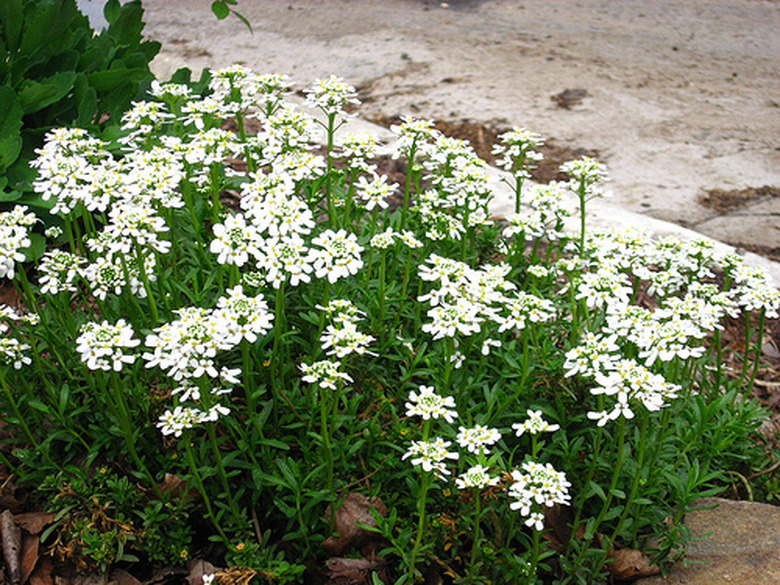How To Care For Candytuft
Things Needed
- Spade
- Compost
- Fertilizer
- Mulch
Tip
Evergreen boughs are recommended for insulating candytuft plants during the winter, and will not deteriorate as quickly as other mulches.
Warning
Candytuft is extremely susceptible to root rot, and should never be allowed to sit in soggy soil for any length of time.
Candytuft is a genus of evergreen, flowering perennials that belong to the mustard family. The genus consists of several different herbs and shrubs, which are all native to Asia, Europe and Africa. Candytuft flowers bloom during the spring and summer, and are white in color. They typically grow to about one foot in height, but can be pruned to maintain even smaller sizes. Candytuft is a low-maintenance plant that requires little care to thrive in most temperate regions.
Step 1
Choose a planting location that receives about eight hours of full sunlight each day, and is partially sheltered from the wind. Use a spade to work rotted compost into the soil prior to planting to increase drainage and fertility.
- Candytuft is a genus of evergreen, flowering perennials that belong to the mustard family.
- Candytuft flowers bloom during the spring and summer, and are white in color.
Step 2
Water candytuft twice a week until it becomes established in the soil. Reduce watering to once per week during the spring and summer, and once every 2 weeks during fall and winter.
Step 3
Feed candytuft plants once a year using a high phosphorous fertilizer with 5-10-5 NPK or similar. Apply in early spring and follow the manufacturer's instructions for proper dosage, and water thoroughly just after application.
Step 4
Apply about 2 inches of mulch to the soil surrounding candytuft in fall, just before the first frost. This will insulate the soil and prevent the roots from taking as much damage during thawing and freezing cycles.
Step 5
Cut candytuft plants back by about 3 inches immediately after flowering has ended. This will keep the plants compact and controlled without causing any damage. They will grow back after several weeks and provide even more blossoms the following spring.
- Water candytuft twice a week until it becomes established in the soil.
- This will insulate the soil and prevent the roots from taking as much damage during thawing and freezing cycles.
References
- Book: Taylor's Guide to Growing North America's Favorite Plants; Barbara Ellis; 2000
- Book: New York Gardener's Guide; Ralph Snodsmith; 2004
